
That title’s an homage to a coworker of mine from history back, who described a spider in that manner and sparked a bizarre mental image…
So around Walkabout Studios, as I said earlier, are arranged several egg sacs (“oothecas”) of Chinese mantises (Tenodera sinensis,) specifically so I can photograph them in various life stages, including hatching. Along for the ride are two Carolina mantis (Stagmomantis carolina) egg sacs that arrived with our shed, and an egg cluster of wheel bugs (Arilus cristatus,) all of which I’ve been trying to keep my eyes on. The first of the Chinese mantis sacs hatched out not quite a week back, but I was a hair too late to capture their moment of emergence. But then, checking on the wheel bug eggs a few days ago, I found I was a bit too late for them, too, seeing that it was liberally clouded with bebe wheels. When hatched, they’re yellow-orange in body color, which changes to black within a few hours (the abdomen stays brilliant red for a few weeks though,) so finding them with black bodies means I was at least a few hours too late.

I was hoping to see some late arrivals and set up both the still-camera high mag macro rig and the video rig, but captured very little of interest; in the process of trying to clear the area beneath the fence of undergrowth and poison ivy (should have done that sooner, but to be honest it wasn’t growing much more than a week ago,) I spooked the spidery sprogs around the edge of the fence and only had a foolhardy few to work with. I did what I could, but wrote off any detailed sequences or video for this species.
Giving that up, I was passing a white azalea bush that overhangs the fence and stopped to do a few flower photos, and suddenly realized that I was staring at another mantis egg cluster at eye level, smack in the process of hatching. Well, alrighty then! I got the taller tripod down and set up shop, and this time, my timing was bang on. This is a much longer video than the previous, because I was able to catch some specific events.
I have to note that, after a couple of years of unsuccessful attempts, including seven egg cases that I paid for and never hatched, I was able to get what I was after this year with an egg case that I didn’t even know was there…
But we need some more detail pics of course.
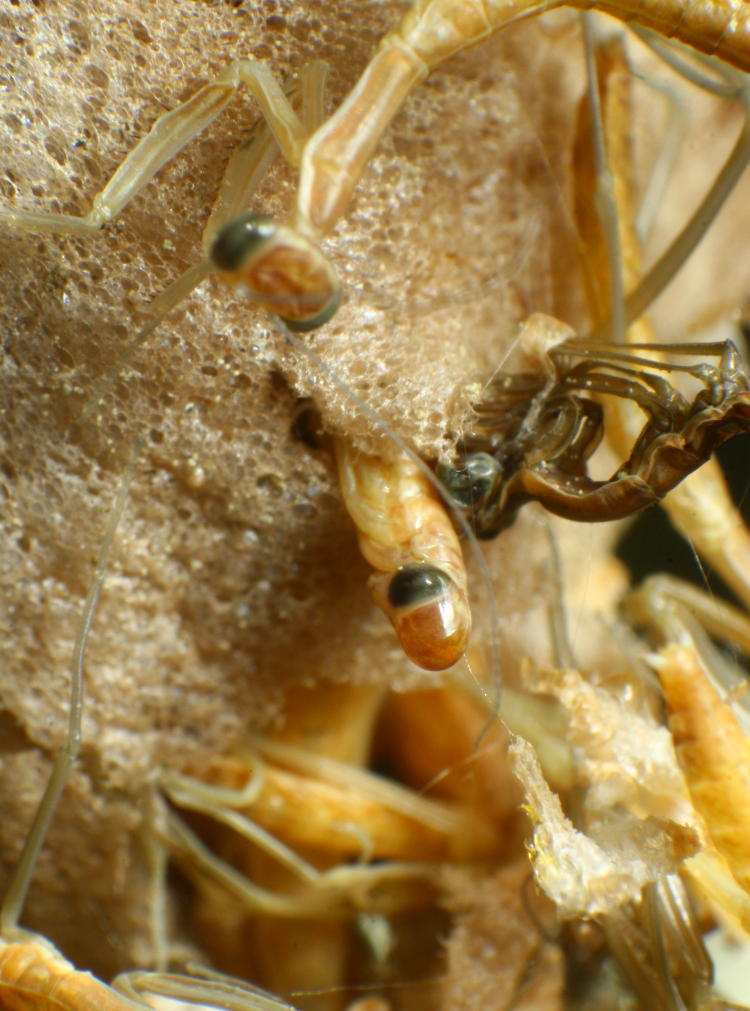
Dead center is one at the moment of emergence – well, that all depends on how you measure it, because it’s been seeing daylight for a minute or three at this point, but it’s also not yet out, so whatevs. An earlier hatchling hangs out on the case above, observing I guess, and one that appears to have gotten trapped and died, brown and dessicated, is immediately to the right. You can also see some of the molted “chaff” hanging from its anchor thread, appearing to be erupting from the head of the new emergent, but that’s just coincidental.
I went out a little later on when the light had shifted for some wider shots.
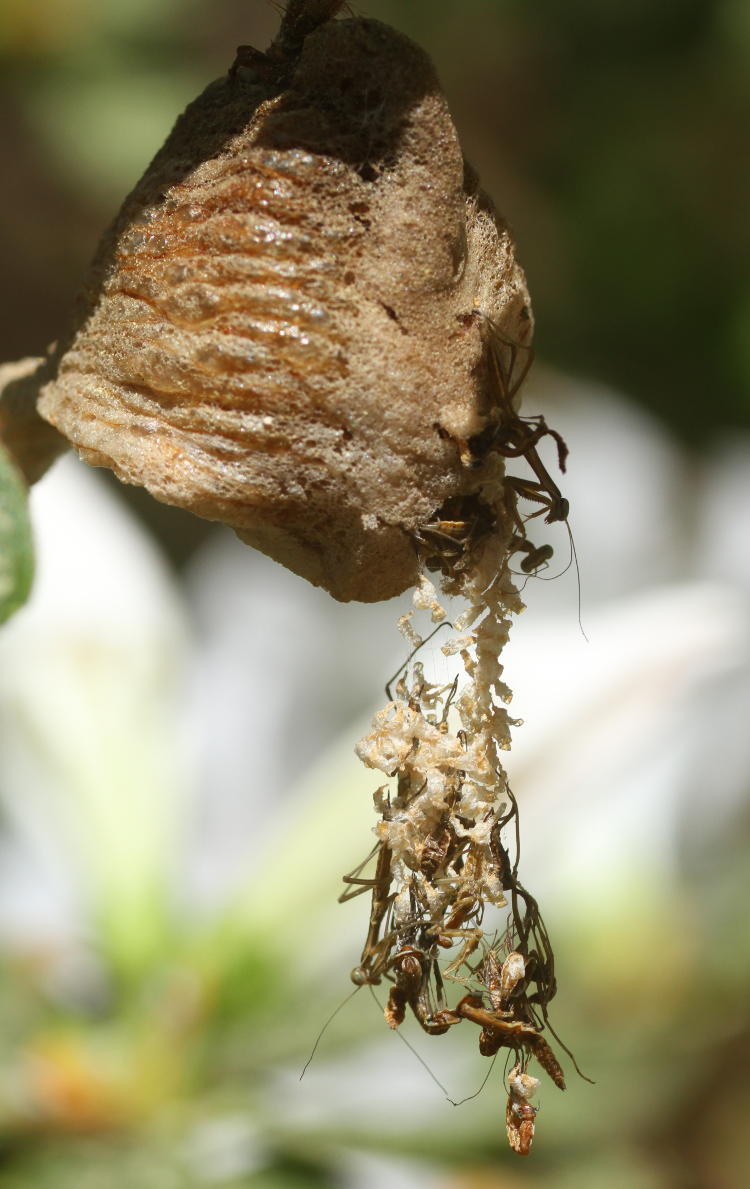
Most of what you see above are ones that didn’t make it, for whatever reasons – tangled in the threads, or simply not viable, or what have you. But there are a few live ones, easily distinguished by their upright stance and antennae and so on. Then we’ll back off to see the blossom at the end of that branch.

A handful of them were hanging out under cover just above the case, while plenty of others adopted similar poses at various other nearby locations – some of them lose their footing and drop, only to snag leaves further down, and even if they make it all the way to the ground (better than a meter and a half from here,) they have so little weight and momentum that it has no ill effect whatsoever.
But I also backed off a little more to show the context, and how easy it would be to miss the case itself if you’re weren’t looking carefully.
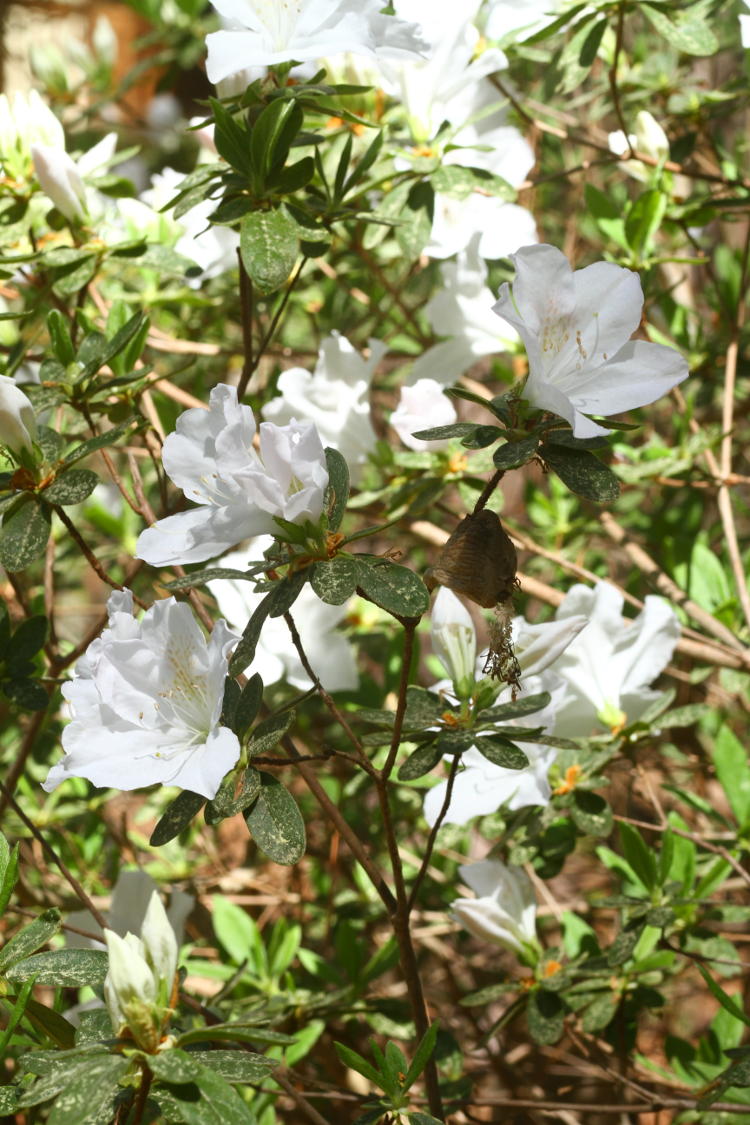
I probably sound like I’m being defensive for not spotting this earlier, but this actually sits outside our fence where I almost never go. Still, I got the crucial moments that I was after, so believe what you want.
I couldn’t resist the expressive posture I found, either.
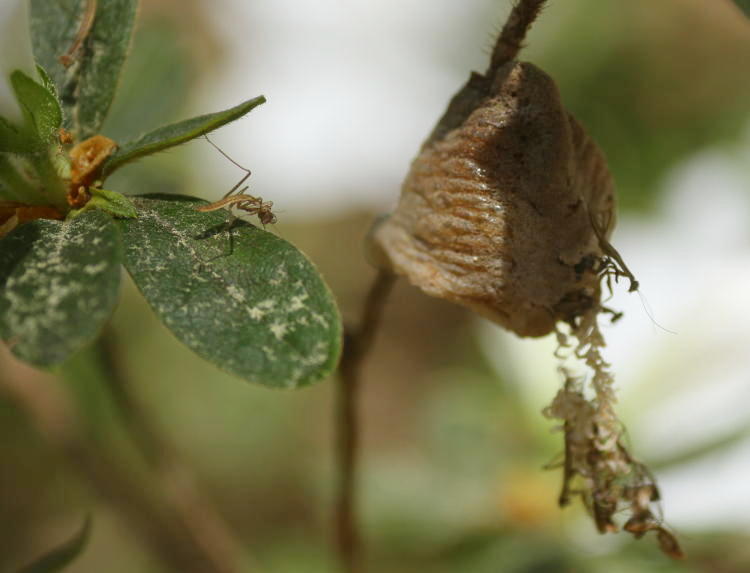
It certainly looks like it’s viewing the egg case intently, but I suspect it simply dropped something off the leaf…
I went out front to the rosemary bush to check on the new arrivals from a few days previously, and couldn’t actually find any – the bush was notably bare, and while I will certainly admit to missing a few, given their size, their ability to conceal themselves, and the density of the bush, I wouldn’t miss dozens. They appear to have abandoned the rosemary, leading me to believe that they didn’t like it, but I have plenty of photos of previous mantids hanging out on the same bushes, so I have my doubts. However, on the purple azalea bush nearby – one much smaller and offering much less concealment and camouflage than a rosemary – I did at least spot one.

The color made a nice backdrop, I admit – the various azaleas are vivid this spring.
Okay, for each photo, I type a meta-tag description that includes the subject’s common and Latin names, and I’m damned tired of typing “Tenodera sinensis,” so let’s move on.
I did a little poking around the back yard afterward, both examining the other cases and looking for further activity on this gorgeous day, and on the gardenia bushes found a few other little subjects.
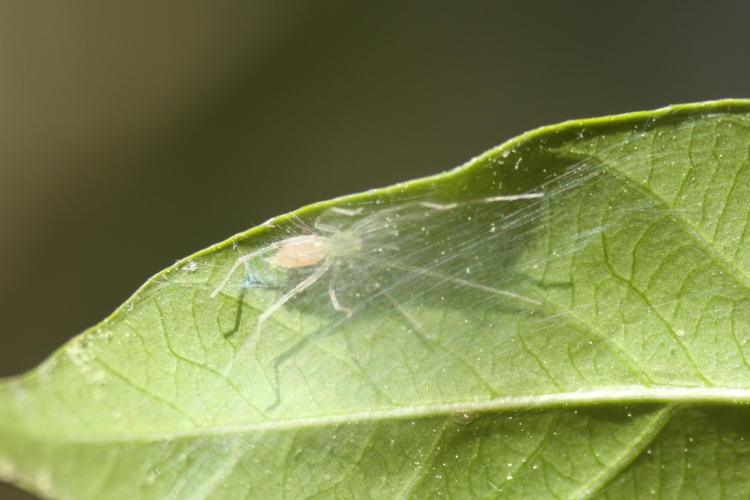
Underneath one leaf sat what may be a long-legged sac spider (Cheiracanthium inclusum) in a breeding nest, probably – leave it to me to pin down all the details. Sac spiders are rather intriguing; some of them may have a potent venom, in that some people have reported strong reactions to them, and are occasionally considered dangerous, though not to the extent of widows or recluses, but among entomologists the jury is still out, it seems. I’ve seen these all over the backyard, but they’re small enough that even if this particular species’ bite was reactive, the circumstances where they could successfully bite someone are few and far between, so I don’t worry about it. The telltale features are the pale and translucent body color and the over-length forelegs.
Under another leaf on the same bush sat something that has yet to be identified.
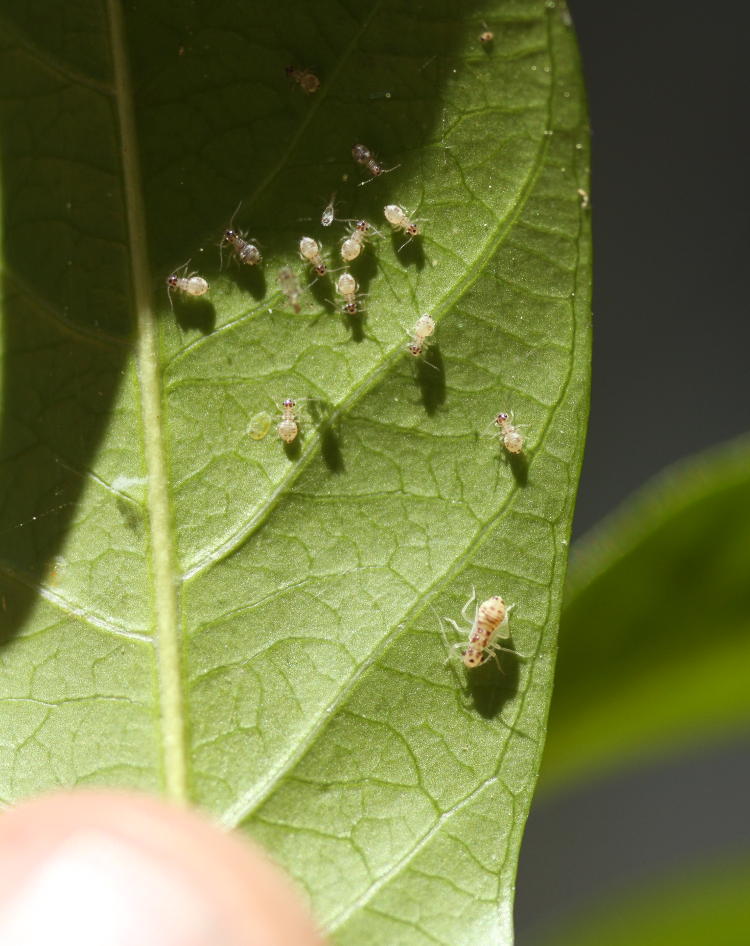
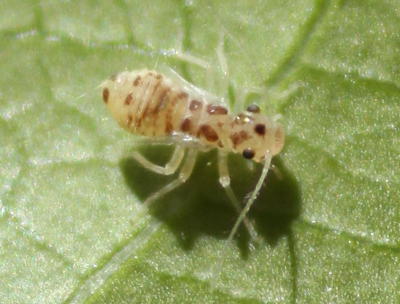 I had to turn the leaf over to expose them to the sun (that’s my thumbtip in the corner,) and it was making them antsy, so these shots lack the detail I can usually obtain. I have only the faintest idea what these might be, because they resemble the springtails that I’ve found on water surfaces, but they’re much bigger and of course not on or near the water. The larger one among the smaller gives the impression of a mother and brood, but the closer look makes them all appear to be juvenile/nymph form, so that pretty much exhausts my guesses regarding the species, and I simply don’t feel like submitting them to BugGuide.net right now – this post has been delayed long enough, plus I’m not that interested in them anyway. We’ll just call them doodlebugs because it seems appropriate and leave it at that. Professionalism all the way.
I had to turn the leaf over to expose them to the sun (that’s my thumbtip in the corner,) and it was making them antsy, so these shots lack the detail I can usually obtain. I have only the faintest idea what these might be, because they resemble the springtails that I’ve found on water surfaces, but they’re much bigger and of course not on or near the water. The larger one among the smaller gives the impression of a mother and brood, but the closer look makes them all appear to be juvenile/nymph form, so that pretty much exhausts my guesses regarding the species, and I simply don’t feel like submitting them to BugGuide.net right now – this post has been delayed long enough, plus I’m not that interested in them anyway. We’ll just call them doodlebugs because it seems appropriate and leave it at that. Professionalism all the way.



















































